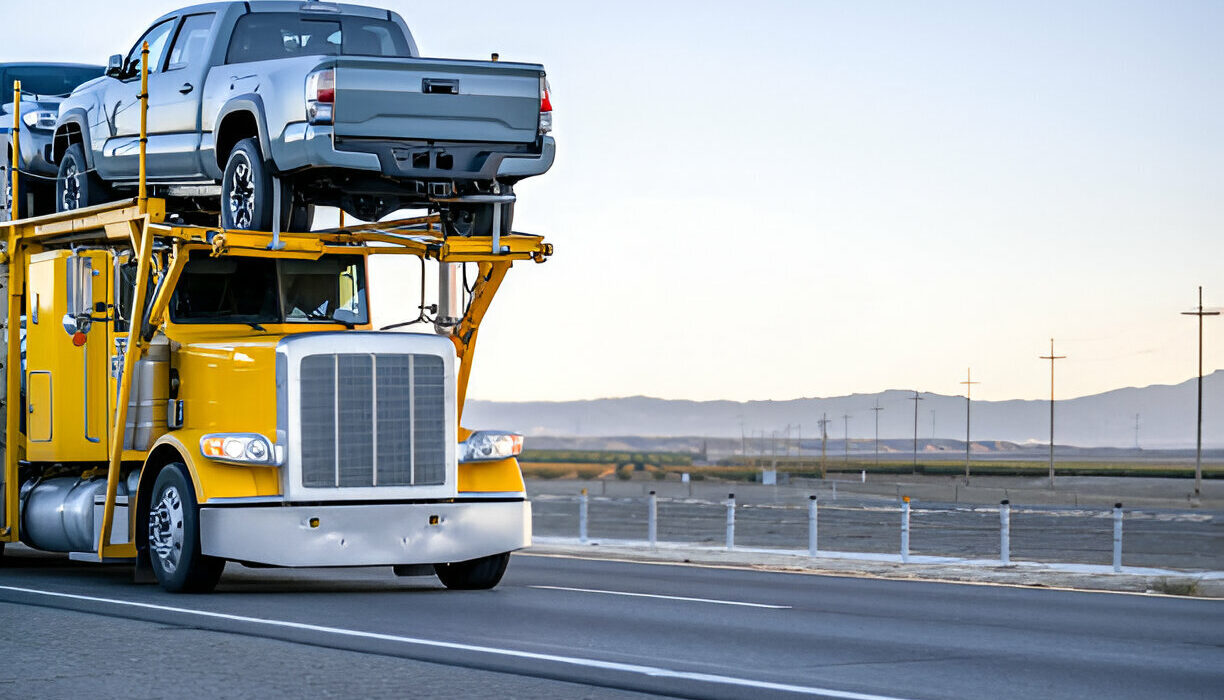How to Prepare Your Car for Shipping with an Auto Shipping Company

Shipping your car with an auto transport company requires careful preparation to ensure a smooth and secure process. Proper preparation helps protect your vehicle from potential damage and ensures it arrives at its destination in the same condition it was shipped. This guide will walk you through the essential steps to prepare your car for shipping.
Step 1: Clean Your Car
Why Clean Your Car?
Cleaning your car before shipping allows for a thorough inspection and accurate documentation of its condition. Dirt and grime can hide existing damage, making it difficult to identify any new damage that may occur during transit.
How to Clean Your Car
- Exterior: Wash your car thoroughly, paying special attention to the undercarriage, wheels, and tires.
- Interior: Vacuum the seats, floor mats, and trunk. Remove any personal items and trash.
Step 2: Document Your Car’s Condition
Why Document Your Car’s Condition?
Documenting your car’s condition provides a record of its state before shipping, which can be used to file a claim if any damage occurs during transit.
How to Document Your Car’s Condition
- Photographs: Take clear, high-resolution photos of your car from all angles, including close-ups of any existing damage (scratches, dents, etc.).
- Notes: Write down any existing issues, such as mechanical problems, scratches, or dents.
Step 3: Remove Personal Belongings
Why Remove Personal Belongings?
Auto shipping companies typically do not cover personal items inside the car, and loose items can move around during transit, causing damage to the interior.
How to Remove Personal Belongings
- Check the Glove Compartment and Trunk: Remove all personal items, including documents, electronics, and accessories.
- Remove Loose Items: Take out any loose or detachable items, such as air fresheners, phone mounts, and GPS devices.
Step 4: Perform Routine Maintenance
Why Perform Routine Maintenance?
Ensuring your car is in good working condition helps prevent issues during loading, unloading, and transit. It also ensures your car is ready to drive upon arrival.
How to Perform Routine Maintenance
- Check Fluid Levels: Ensure all fluids (oil, coolant, brake fluid, etc.) are at appropriate levels.
- Inspect Tires: Check tire pressure and tread depth. Inflate tires to the recommended pressure.
- Battery: Ensure the battery is fully charged and secure.
- Fuel Level: Keep the fuel tank about a quarter full. This reduces weight while providing enough fuel for driving upon delivery.
Step 5: Disable Alarm Systems
Why Disable Alarm Systems?
An active alarm can go off during transit, causing disruptions and potential delays. Disabling the alarm ensures a smoother transport process.
How to Disable Alarm Systems
- Refer to Your Car’s Manual: Follow the instructions in your car’s manual to disable the alarm system.
- Inform the Shipping Company: Notify the shipping company that the alarm has been disabled.
Step 6: Secure or Remove Loose Parts
Why Secure or Remove Loose Parts?
Loose parts, such as antennas and spoilers, can be damaged or cause damage during transit. Securing or removing them helps protect your vehicle.
How to Secure or Remove Loose Parts
- Antenna: Retract or remove the antenna.
- Spoilers and Roof Racks: Remove or secure any removable spoilers, roof racks, or other accessories.
- Fold Mirrors: Fold in side mirrors to reduce the risk of damage.
Step 7: Confirm Details with the Shipping Company
Why Confirm Details?
Confirming details ensures there are no misunderstandings or last-minute issues that could delay the shipping process.
How to Confirm Details
- Pickup and Delivery Locations: Confirm the addresses and contact information for both the pickup and delivery locations.
- Scheduling: Verify the scheduled pickup and delivery dates and times.
- Insurance Coverage: Review the shipping company’s insurance coverage and understand what is covered in case of damage.
Frequently Asked Questions
Q1: How far in advance should I prepare my car for shipping? A: Start preparing your car at least one week before the scheduled pickup date to ensure you have enough time to complete all necessary steps.
Q2: Can I leave personal items in my car during shipping? A: It is generally advised not to leave personal items in your car during shipping, as they are not covered by the company’s insurance and can pose safety risks.
Q3: Do I need to be present during pickup and delivery? A: Yes, it’s important to be present or have a trusted representative available to hand over and receive the vehicle. This ensures that all documentation and inspections are completed accurately.
Q4: What should I do if my car is damaged during transit? A: Document the damage with photographs and report it to the shipping company immediately. Their insurance coverage should address any legitimate claims.
Q5: Can I track my car during shipping? A: Many auto shipping companies offer GPS tracking services, allowing you to monitor the location of your vehicle in real-time.
Conclusion
Properly preparing your car for shipping with an auto transport company ensures a smooth and secure transport process. By following these steps—cleaning your car, documenting its condition, removing personal belongings, performing routine maintenance, disabling alarm systems, securing loose parts, and confirming details with the shipping company—you can protect your vehicle and ensure it arrives at its destination in excellent condition. Taking these precautions will give you peace of mind and a hassle-free auto shipping experience.




